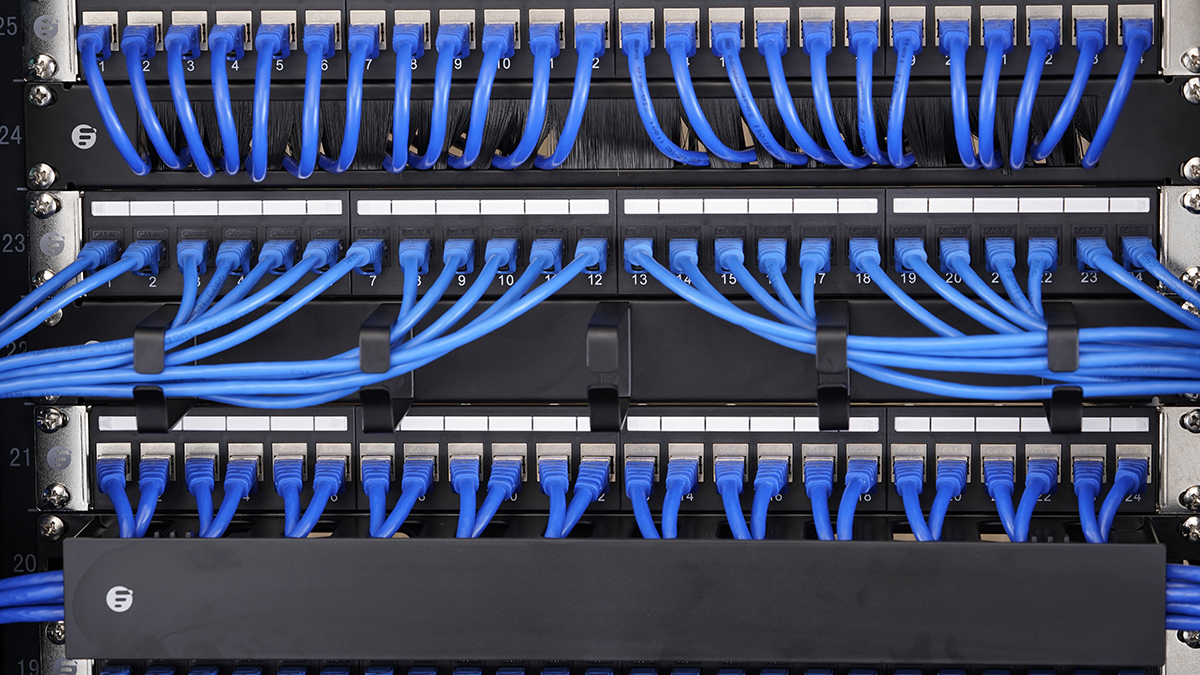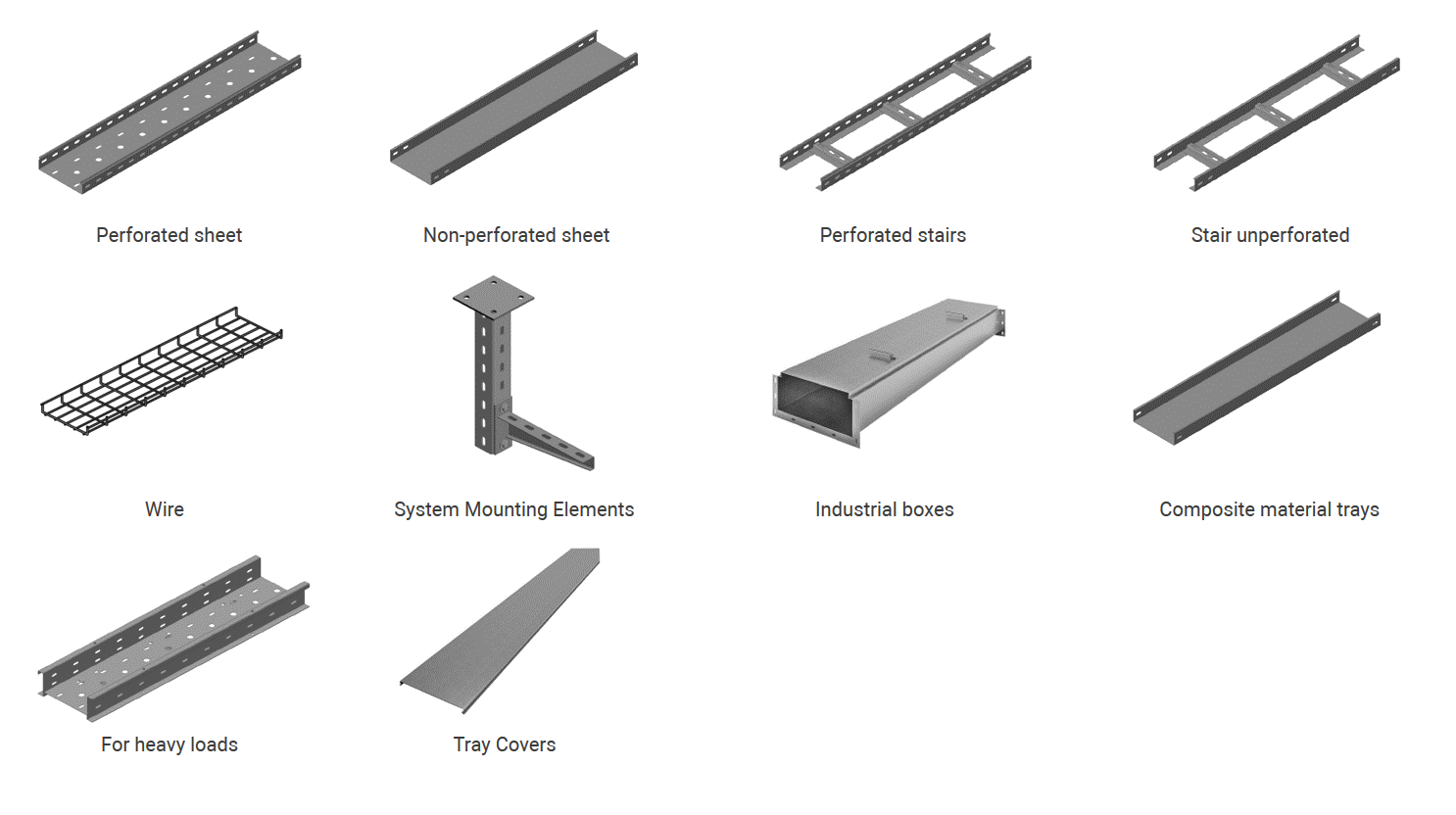A Cable Management System organizes and secures cables, reducing clutter and improving safety. It enhances efficiency and aesthetics in workspaces.
A well-implemented cable management system is essential for any modern workspace. It ensures cables are neatly arranged and easily accessible. This reduces the risk of tripping hazards and electrical issues. Proper cable management also enhances the visual appeal of your environment.
It simplifies troubleshooting and maintenance by keeping cables clearly labeled and organized. Investing in a cable management system boosts productivity and extends the lifespan of your equipment. Whether in an office, home, or industrial setting, an efficient cable management system is crucial for optimal performance and safety. It helps maintain a clean, professional appearance while supporting the seamless operation of your devices.
The Importance Of Cable Management
Cable management is crucial for any setup involving electronics. It helps keep cables organized and functional. An efficient system reduces clutter and enhances performance. Let’s explore why cable management matters.
Enhancing Aesthetics
Messy cables can make any space look untidy. Proper cable management improves the look of your workspace. It keeps cables hidden or neatly arranged. This creates a cleaner, more professional environment.
- Reduces visual clutter
- Makes spaces look organized
- Improves overall decor
Improving Safety
Tangled cables can be a hazard. They can cause people to trip and fall. A cable management system keeps cables out of the way. This reduces the risk of accidents.
| Issue | Solution |
|---|---|
| Tripping hazards | Organized cables |
| Electrical fires | Proper insulation |
Extending Equipment Life
Proper cable management protects your devices. It prevents cables from bending and breaking. This ensures that all connections remain secure. Your equipment will last longer and perform better.
- Prevents wear and tear
- Maintains secure connections
- Enhances device performance

Credit: community.fs.com
Cable Chaos: The Risks Of Neglect
Ignoring cable management can lead to many problems. These problems can affect safety, performance, and equipment life. Let’s explore some common risks.
Tripping Hazards
Cables left on the floor can cause trips and falls. This is dangerous for anyone walking in the area.
Tripping over cables can result in injuries. It can also damage the cables and connected devices.
Interference And Signal Loss
Poor cable management can cause signal interference. Cables that cross each other can disrupt signals.
This can lead to loss of data or poor performance. Devices may not work properly due to signal loss.
Dust Accumulation And Overheating
Untidy cables collect dust easily. Dust can cause components to overheat.
Overheating can shorten the life of your equipment. It can also cause sudden shutdowns or failures.
Regular cleaning and proper cable arrangement can prevent this. Use cable ties and covers to keep cables neat.
Types Of Cable Management Systems
Effective cable management ensures a neat and organized workspace. Various cable management systems cater to different needs. Explore the types below to find the best solution for your setup.
Cable Trays And Baskets
Cable trays and baskets are essential for heavy-duty cable management. These systems support and protect large bundles of cables. They are often used in industrial and commercial settings.
- Cable Trays: Flat or ladder-like structures for laying cables.
- Cable Baskets: Mesh-like structures that allow better airflow.
Both options keep cables off the ground and organized. They also reduce the risk of damage and tangling.
Cable Sleeves And Tubes
Cable sleeves and tubes are flexible options for bundling multiple cables. These are perfect for home or office use.
- Cable Sleeves: Fabric or rubber tubes that encase cables.
- Cable Tubes: Hard plastic or flexible tubes for extra protection.
These solutions prevent cables from tangling and make them easier to manage. They also provide an added layer of protection from wear and tear.
Desk Organizers And Clips
Desk organizers and clips are ideal for smaller setups. These tools keep cables tidy and accessible.
- Desk Organizers: Storage units with compartments for different cables.
- Cable Clips: Small clips that hold cables in place on desks.
These options are great for home offices and personal workspaces. They help maintain a clean and clutter-free environment.

Credit: powersolutionme.com
Planning Your Cable Management Setup
Planning a cable management setup is crucial for a tidy space. A well-organized system boosts safety and efficiency. Let’s explore steps for a perfect setup.
Assessing Your Needs
First, identify all devices and cables. Write down each device and its cables. This helps you understand your needs.
| Device | Number of Cables |
|---|---|
| Computer | 3 |
| Monitor | 2 |
| Router | 2 |
Next, think about the cable length and type. Note where each cable goes. Plan for extra cables if needed.
Choosing The Right Tools
Select tools that fit your needs. Basic tools include:
- Cable ties
- Cable sleeves
- Cable clips
- Cable trays
Use cable ties for bundling wires. Cable sleeves can hide multiple cables. Clips keep cables in place. Trays manage cables under desks.
Choose tools based on your setup. For example, use clips for a desk. Use trays for larger areas.
Designing For Accessibility
Accessibility ensures easy access to cables. Plan for changes and upgrades. Avoid permanent fixes that trap cables.
Use labels to identify cables. This helps in troubleshooting. Group similar cables together. For instance, power cables in one group, data cables in another.
Keep some slack in cables. This avoids tension and breakage. Ensure power outlets are reachable. Design for easy access to all cables.
Implement a good cable management system. Your workspace will look clean and professional.
Diy Solutions Vs. Professional Systems
Cable management is crucial for a neat and safe environment. You can choose between DIY solutions and professional systems. Each has its pros and cons. This section will help you decide which is best for you.
Pros And Cons Of Diy
DIY cable management can be a fun and cost-effective project. Here are some pros and cons:
| Pros | Cons |
|---|---|
|
|
When To Invest In Professional Solutions
Sometimes, DIY solutions may not be enough. Here are some scenarios where professional systems are worth the investment:
- Complex Setups: For large offices or data centers, professional systems ensure reliability.
- Durability Needs: Professional systems use high-quality materials that last longer.
- Safety Concerns: Electrical safety is crucial. Professionals follow safety standards.
Step-by-step Guide To Uncluttering Your Space
Uncluttering your space starts with a good cable management system. Tidy cables can make your area look clean and organized. Follow this guide to get started.
Identifying Problem Areas
First, find the messy spots. Look behind desks and under tables. Note all tangled wires and cords. Write down or take pictures of the problem areas. This way, you know where to focus your efforts.
Organizing And Bundling Cables
Start by unplugging all cables. This helps you see each one clearly. Next, sort them by type. Group power cords, USB cables, and HDMI wires separately. Use cable ties or Velcro straps to bundle them together.
Label each bundle. Use tags or colored tape to mark them. This makes it easy to identify which cable is which. You can also use cable sleeves for a cleaner look. These sleeves hide multiple cables inside one cover.
| Tool | Purpose |
|---|---|
| Cable Ties | Bind cables together |
| Velcro Straps | Reusable cable bundling |
| Labels | Identify cables |
| Cable Sleeves | Hide multiple cables |
Maintaining Your System
Keep your system tidy with regular check-ups. Every few months, inspect your cables. Make sure they are still organized and labeled. Replace any worn-out ties or straps.
Store extra cables properly. Use boxes or bags to keep them sorted. Avoid letting them pile up and get tangled. This keeps your space clean and clutter-free.
- Inspect cables regularly.
- Replace worn-out ties.
- Store extra cables properly.
With these steps, your space will stay neat and organized. Enjoy a clutter-free environment and a more efficient workspace.
The Role Of Technology In Cable Management
Cable management has evolved with technology. Traditional cable ties and racks are still used. But modern solutions offer better efficiency and aesthetics. Technology plays a key role in this transformation.
Wireless Solutions
Wireless technology has reduced the need for cables. Devices now connect via Wi-Fi, Bluetooth, and infrared. This minimizes clutter and enhances mobility.
- Wi-Fi for internet connections
- Bluetooth for peripheral devices
- Infrared for remote control operations
These wireless solutions help in maintaining a clean and organized workspace. They also improve the overall functionality of devices.
Smart Organizers And Accessories
Smart organizers and accessories are game-changers. They offer intelligent ways to manage cables. Some come with built-in charging ports.
Below is a table showcasing popular smart organizers and their features:
| Product | Features |
|---|---|
| Smart Cable Box | Built-in USB ports, fire-resistant material |
| Magnetic Cable Holder | Magnetic surface, easy to attach and detach |
| Smart Power Strip | Multiple outlets, surge protection |
These accessories not only organize cables but also enhance safety. They help in reducing the risk of electrical hazards.

Credit: arman-engineering.ru
Cable Management For Different Environments
Cable management keeps wires neat and safe. It prevents hazards and boosts efficiency. Different environments need specific cable management solutions. Let’s explore how to manage cables in various settings.
Home Office Setups
Home offices need tidy cable setups. A clutter-free space helps productivity. Use these tips to manage cables:
- Use cable clips to hold wires in place.
- Label each cable for easy identification.
- Use cable sleeves to group multiple wires.
- Install a cable tray under the desk.
A clean setup reduces stress and boosts work focus. Keep your home office organized with these methods.
Commercial Spaces
Commercial spaces have more cables and equipment. Organized cables are vital for safety and efficiency. Use these methods to manage cables in commercial settings:
- Use cable raceways to hide wires along walls.
- Install floor cable covers to avoid trips.
- Use cable ties to bundle cables together.
- Color-code cables for easy tracing.
Proper cable management in commercial spaces ensures a safe and tidy environment. These solutions help maintain order and safety.
Data Centers And Server Rooms
Data centers and server rooms need high-level cable management. Proper cable management ensures smooth operations and easy maintenance. Consider these methods:
- Use vertical and horizontal cable managers.
- Label each cable with its function and destination.
- Implement a structured cabling system.
- Use cable ladders for overhead cable routing.
A well-organized data center or server room boosts efficiency and safety. These methods help maintain optimal performance and easy troubleshooting.
Frequently Asked Questions
What Is The Function Of Cable Management?
Cable management organizes and secures cables. It reduces clutter, improves airflow, and prevents damage. Efficient cable management enhances workspace safety and aesthetics.
What Is Cable Management Software?
Cable management software helps organize, track, and manage cables in IT environments. It improves efficiency and reduces downtime.
Is Cable Management Necessary?
Yes, cable management is necessary. It improves safety, enhances aesthetics, and boosts equipment performance. Proper organization prevents tangles and reduces maintenance time.
How Do You Use Cable Management?
Use cable ties to bundle cables neatly. Label each cable for easy identification. Utilize cable clips or sleeves to secure them. Route cables behind furniture or along walls. Regularly check and adjust to maintain organization.
Conclusion
A cable management system is essential for an organized and efficient workspace. It reduces clutter, enhances safety, and improves aesthetics. Investing in a good system saves time and boosts productivity. Choose the right solution to meet your needs and enjoy a tidy, professional environment.



